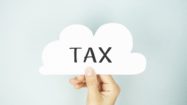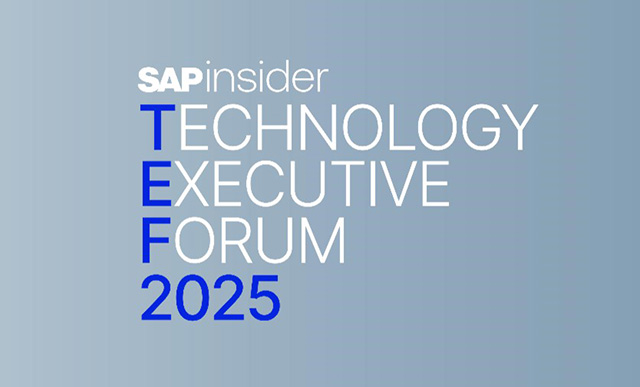SAP Global Tax Management
Filter By
Browse By
- SAP Analytics and AI
- SAP Application Development and Integration
- All SAP Application Development and Integration
- SAP ABAP
- SAP ABAP Development Tools
- SAP ABAP Test Cockpit
- SAP API Management
- SAP BAPI
- SAP Basis
- SAP BRF
- SAP Business Application Studio
- SAP CMS
- SAP Design Studio
- SAP Development Tools
- SAP DevOps
- SAP EAI
- SAP EDI
- SAP Extension Suite
- SAP Fiori
- SAP Fiori Elements
- SAP Integration Suite
- SAP Low Code Application Development
- SAP Low Code Automation
- SAP Netweaver
- SAP Release Management
- SAP UI5
- SAP Web Application Server
- SAP Web IDE
- SAP Business Process Management
- SAP Center of Excellence
- SAP CIO
- SAP Customer Experience
- SAP Data and Data Management
- All SAP Data and Data Management
- SAP BW
- SAP BW/4HANA
- SAP Crystal Reports
- SAP Data Archiving
- SAP Data Center
- SAP Data Governance
- SAP Data Integration
- SAP Data Migration
- SAP Data Quality
- SAP Data Services
- SAP Data Strategy
- SAP Data Visualization
- SAP Data Warehouse Cloud
- SAP DMS
- SAP Document Control
- SAP EIM
- SAP ETL
- SAP ETL Tools
- SAP HANA
- SAP HANA Administration
- SAP HANA Deployment Infrastructure
- SAP HANA Studio
- SAP Master Data
- SAP Master Data Governance
- SAP MDM
- SAP Enterprise Architect
- SAP Enterprise Asset Management
- SAP ERP
- SAP Finance
- All SAP Finance
- SAP Accounting
- SAP AR AP
- SAP Asset Accounting
- SAP Billing Systems
- SAP BPC
- SAP BRIM
- SAP Cash Management
- SAP Central Finance
- SAP Controlling
- SAP COPA
- SAP Cost Center Accounting
- SAP Currency Risk
- SAP e-invoicing
- SAP FICO
- SAP Finance Automation
- SAP Advanced Financial Closing
- SAP Financial Consolidation
- SAP Financial Planning
- SAP FX Risk
- SAP General Ledger
- SAP Global Tax Management
- SAP Hyperion
- SAP Order to Cash
- SAP Payment Processing
- SAP Profitability Analysis
- SAP Rebate Management
- SAP S/4HANA Finance
- SAP SWIFT Compliance
- SAP Treasury Management
- SAP Universal Journal
- SAP Governance Risk and Compliance
- SAP Human Capital Management
- SAP Intelligent Technologies
- SAP Platform and Technology
- All SAP Platform and Technology
- SAP Business Technology Platform
- SAP Cloud
- SAP Cloud Connector
- SAP Cloud Integration Platform
- SAP Cloud Migration
- SAP Cloud Platform
- SAP Cloud Providers
- SAP Cloud Strategy
- SAP Digital Signature
- SAP Container Platform
- SAP HANA Enterprise Cloud
- SAP Digital Asset Management
- SAP Smart Forms
- SAP HEC
- SAP Digital Integration Hub
- SAP Hyperscalers
- SAP Infrastructure
- SAP Messaging
- SAP Quality and Testing
- SAP Security
- SAP Spend Management
- SAP Supply Chain Management
- All SAP Supply Chain Management
- SAP APO
- SAP Asset Management
- SAP Business Network
- SAP Digital Manufacturing Cloud
- SAP Digital Twin
- SAP EWM
- SAP IBP
- SAP Inventory Management
- SAP Label Printing
- SAP Logistics
- SAP Manufacturing
- SAP Manufacturing Automation
- SAP MES
- SAP MII
- SAP MM
- SAP MRO
- SAP MRP
- SAP Order Management
- SAP Plant Maintenance
- SAP PLM
- SAP Production Planning
- SAP S&OP
- SAP SD
- SAP SPM
- SAP Supply Chain Planning
- SAP Track and Trace
- SAP Transportation Management
- SAP System Administration
Global Tax Management: An Overview and Key Considerations
What is Global Tax Management
Global tax management is the process by which tax managers evaluate the global taxability of an organization’s industry, corporate structure, business model, operations, products or services, business activities, and daily transactions.
To ensure global tax reporting requirements are met accurately and consistently by all subsidiaries across multiple tax jurisdictions, global tax management requires a holistic view of an organization’s entire flow of transactional data across its entire value chain.
Global tax management brings together disparate technologies from multiple vendors, such as SAP, Vertex, Sovos, Avalara, Thomson Reuters, and different currencies and various regulators, contributing to complexity across the tax function.
Global Tax Management: An Overview and Key Considerations
What is Global Tax Management
Global tax management is the process by which tax managers evaluate the global taxability of an organization’s industry, corporate structure, business model, operations, products or services, business activities, and daily transactions.
To ensure global tax reporting requirements are met accurately and consistently by all subsidiaries across multiple tax jurisdictions, global tax management requires a holistic view of an organization’s entire flow of transactional data across its entire value chain.
Global tax management brings together disparate technologies from multiple vendors, such as SAP, Vertex, Sovos, Avalara, Thomson Reuters, and different currencies and various regulators, contributing to complexity across the tax function.
For many organizations, global tax management typically involves these three steps:
- Define compliance needs worldwide across all operating units, lines of business, tax jurisdictions.
- Map businesss processes to govern how compliance should flow through the organization globally.
- Implement technology solutions that can accurately collect information and content updates from disparate sources in alignment with defined business processes to deliver master data and financial information asynchronously as required.
Key Considerations for SAPinsiders
Understand the growing complexity of global tax management. Organizations considering different areas of the world for new potential opportunities must be aware of how these business interests can affect the local country’s taxation. Changing legislation and mandates around global tax management is becoming ever more complex as organizations face growing challenges in evaluating how their growth initiatives may impact global tax liabilities.
Evaluate your content needs for effective global tax compliance. Tax managers need to consider what global activities may be taxed in which locations and ensure that they are meeting the tax requirements of each country accurately and promptly. Greater global tax compliance efficiency can help organizations reallocate accounting resources to support revenue-generating tax compliance opportunities.
Implement technology to simplify global tax management needs. The Ingram Micro and Dow Chemicals case studies provide best practices outlining how technology makes it possible to create a global view of the enterprise, enabling tax function managers responsible for global compliance, global reporting, and global controls. Content updates that provide real-time data on tax jurisdictions, tax rates, and tax content changes are critical for efficient global tax compliance.
177 results
-

- SAP Global Tax Management
 Premium
Premium
Eliminate Blind Spots in your AP Tax Compliance Process
Companies don’t want to face the digital tax tsunami with disparate and antiquated AP automation systems that rely on manual workflow and document images, such as those invoices digitized through Optical Character Recognition (OCR) techniques, rather than end-to-end structured data. Managing AP also means ensuring all applicable tax requirements are met, including updates for country tax compliance mandates. …
-

- SAP Global Tax Management
 Premium
Premium
Countdown to Brexit: Urgent Actions for Businesses to Comply with New VAT and Customs Rules
The Brexit transition period ends 31 December 2020, which means that thousands of UK and EU businesses will face new VAT, customs, and tariff obligations. Most of the new rules are now known, which means that both B2B and B2C businesses need to start taking action now to avoid fines, extra import taxes, delayed shipments...…
-

Digitization and Automation of Tax
Reading time: 2 mins
Tax laws are constantly changing as events such as Brexit and the Wayfair ruling create new requirements for tax calculation, reporting, and audits. Regulators are demanding a new level of visibility and digitization of tax reporting. Sessions in this track outline key rules, and regulations you need to understand. We will also help you navigate…
-
-

Moving Your Tax Engine to the Cloud: A Revenue Generating Opportunity?
Reading time: 10 mins
Many companies expect to experience revenue-generating results when they migrate to SAP S/4HANA. In addition to cutting costs by increasing productivity and efficiency, an SAP S/4HANA project provides SAP customers with another opportunity that is often overlooked: the chance to move their on-premise tax engine to the cloud. Although the intangible benefits of such a…
-

Why Tax Departments Need to Build Technology Roadmaps
Reading time: 10 mins
As governments continue to introduce legislation that gives them visibility into companies’ data, systems, and processes, tax leaders are pressured to create their own digital transformation and respond with system changes that improve compliance, planning, and audit work. However, tax departments have historically competed for technology dollars. Developing a technology roadmap can help the tax…
-

What Does Brexit Mean for SAP Customers
Reading time: 6 mins
By Rizal Ahmed, Chief Content Officer, SAPinsider With end of the Brexit transition period imminent, thousands of businesses now are facing the imposition of new VAT, customs, and tariff obligations. What do you need to know to prepare? Preparing for Brexit The departure of the United Kingdom from the European Union carries with it many…
-

Top Tax Considerations for SAP Customers
Reading time: 11 mins
As a product or a service that is subject to value-added tax (VAT) moves along the supply chain, the government is able to verify whether VAT was introduced at each step correctly by auditing documented transactions. While a great concept in theory, VAT can leave massive gaps in practice due to the complexity of verifying…
-
-

- SAP Global Tax Management
 Premium
Premium
Deliver global tax compliance — the intelligent way
Rapid digitalization presents new and unique challenges to governments and enterprises every day. While governments try to keep pace with the evolving laws and the governance frameworks, enterprises are expected to be compliant in every country in which they operate. As the legal obligations and indirect tax regulations multiply worldwide, the need to stay compliant…
-

- SAP Global Tax Management
 Premium
Premium
Critical Tax Considerations for Your ERP Migration Strategy
Today’s businesses face increasing tax complexity as they grow and expand into new global markets. Companies strive to comply with ever-changing tax laws efficiently, accurately, and at just the right cost. This session will prepare you for important discussions around tax implications and tax planning strategies that can ensure best practices for time and cost…
-

- SAP Global Tax Management
 Premium
Premium
Getting Procurement Right with Vertex Indirect Tax and SAP Ariba Solutions
Are your teams applying the correct sales, use, and VAT codes? Tax touches every part of the procurement process and Tax needs to own tax. Integrating a tax engine with your procurement system can remove this burden, improve processes, and help reduce audit risk. Lower your risk and gain more visibility and control into your…
Become a Member
Unlimited access to thousands of resources for SAP-specific expertise that can only be found here.
Become a Partner
Access exclusive SAP insights, expert marketing strategies, and high-value services including research reports, webinars, and buyers' guides, all designed to boost your campaign ROI by up to 50% within the SAP ecosystem.
Upcoming Events
-

SAPinsider Technology Executive Forum
December 02 - 03, 2025
Phoenix, Arizona
United States
View Event
Related Vendors
Your request has been successfully sent

